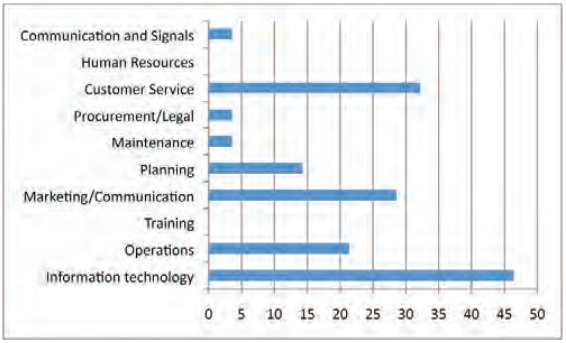ITS Fixed Route Software: Trend Towards Mobile Apps

This intriguing TCRP Synthesis shows how transit agencies are becoming more and more interested in sharing their schedules and real time information with their riders. In an age of mobile technology, text messaging and smartphones, there is an even greater expectation of connectivity from riders who are demanding such information to be at finger’s reach. Here are the top 3 takeaways quoted directly from the study:
- Although a limited number of transit agencies in the United States provide real-time information on mobile devices as of May 2010, there is a growing trend toward deploying this technology.
- Using a third party to develop real-time applications and provide real-time information on mobile devices is overwhelmingly the approach that transit agencies are taking.
- The costs of providing real-time information on mobile devices are not well understood and are discussed in only a limited way in the literature and survey responses.
Real time passenger information for mobile devices is entirely dependent upon the data drawn from CAD/AVL and ITS fixed route software solutions. In other words, you can’t have one without the other. The TCRP document addresses the agencies that are concerned about the cost of implementing, designing, managing, updating and maintaining passenger information systems.
Developing an Application In-house
The TCRP study reinforces the major operational and cost issues the come from making your own real time application for mobile devices. Agencies don’t want the hassle of paying for managing the development, maintenance and design process. The study shows that agencies prefer using third-party software providers who can give agencies a ready-to-use, self-maintaining solution that requires little IT intervention.
How ITS Fixed Route Software Relieves IT Work
The figure below (page 31, TCRP) reveals that IT departments are the most responsible for deployment of a real time information for mobile devices. An ITS fixed route software system can allow you to push out data, gathered from the CAD/AVL system, directly to passenger information systems, such as a mobile app. This means a huge reduction to the amount of time an IT department will require to manage data.
 We’ve put more detailed descriptions of the overall system in our “Definitive Guide to Passenger Information Systems.” You can download it here.
We’ve put more detailed descriptions of the overall system in our “Definitive Guide to Passenger Information Systems.” You can download it here.

